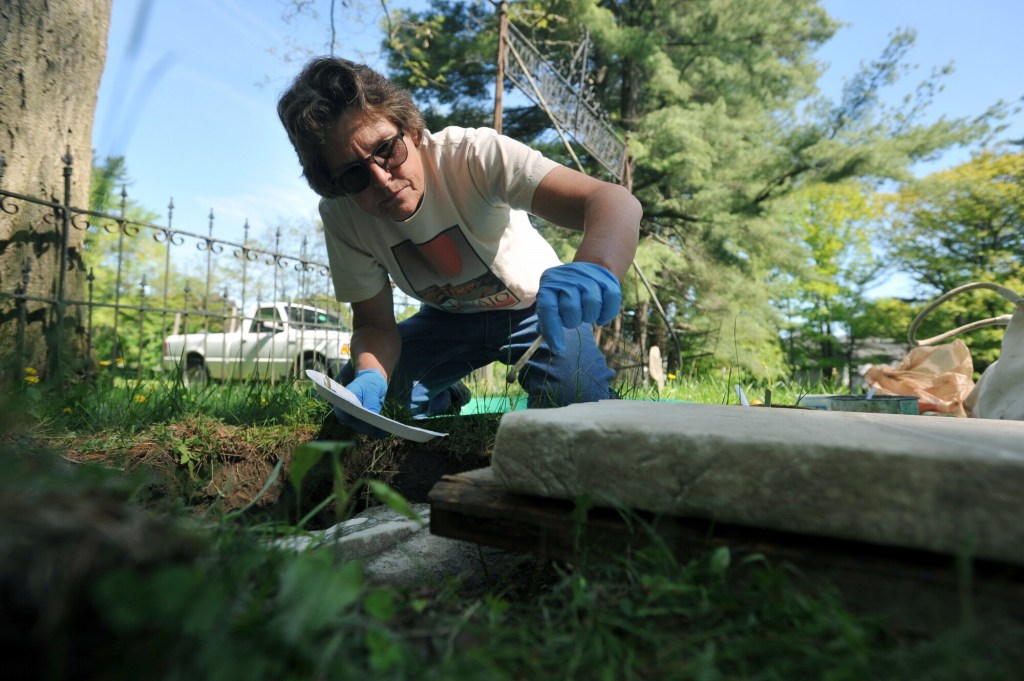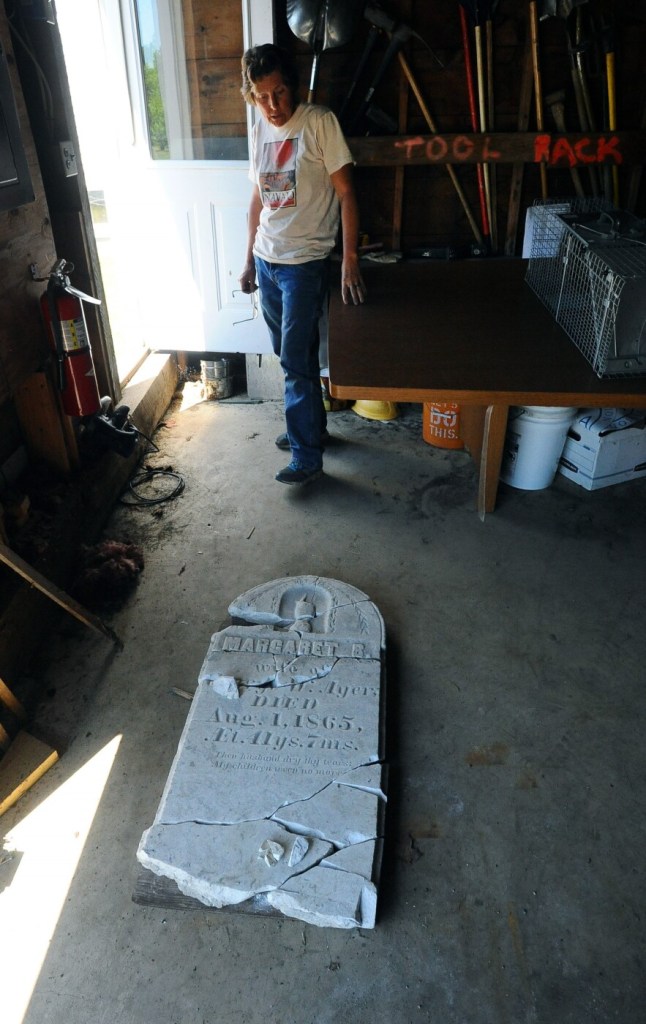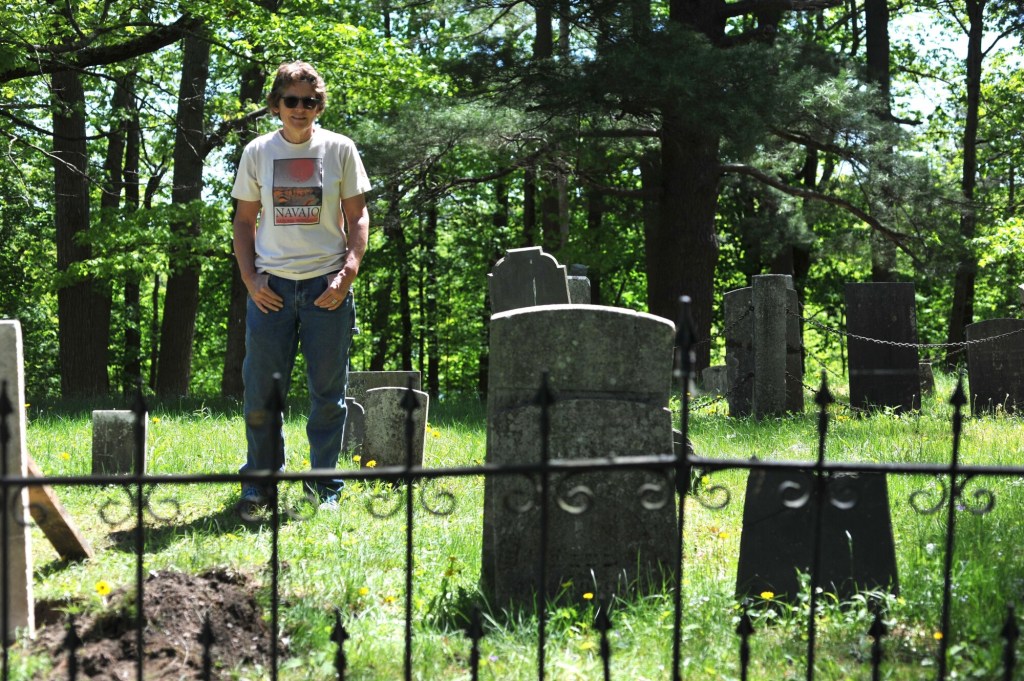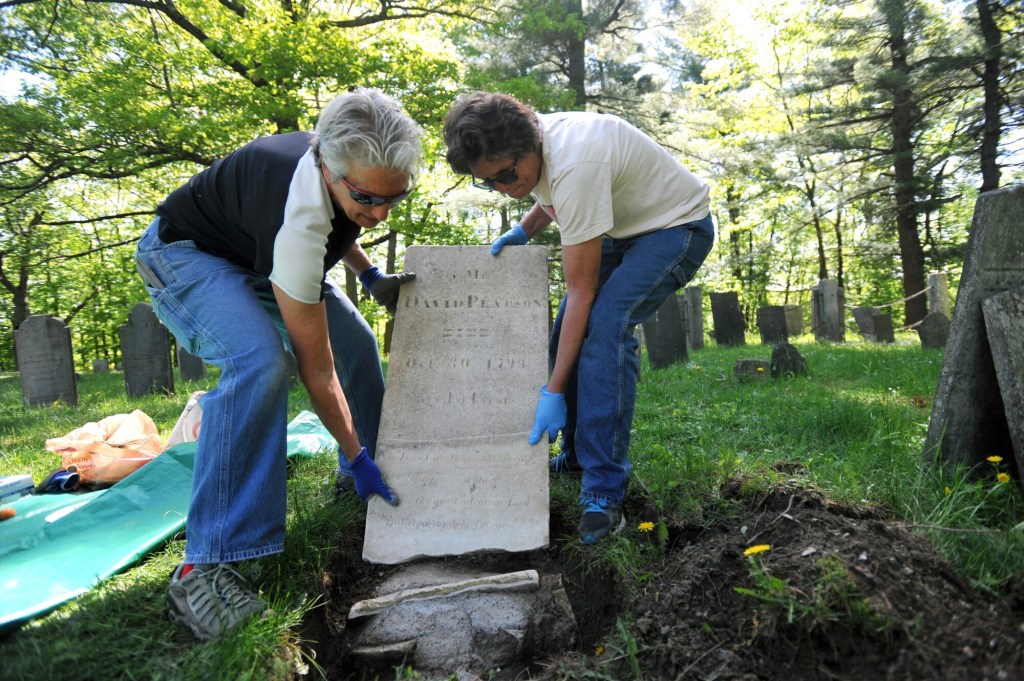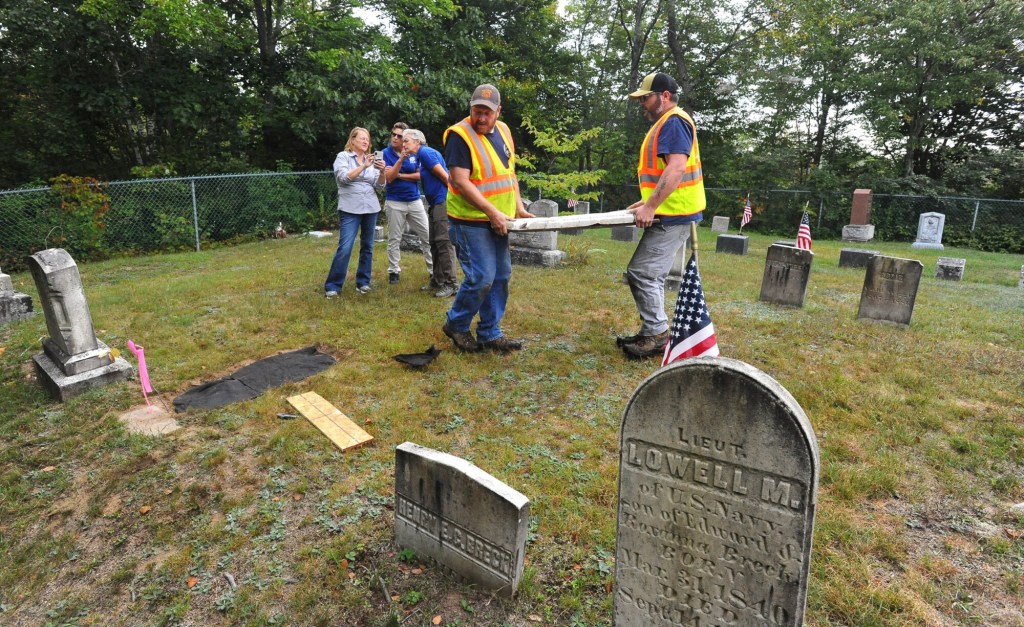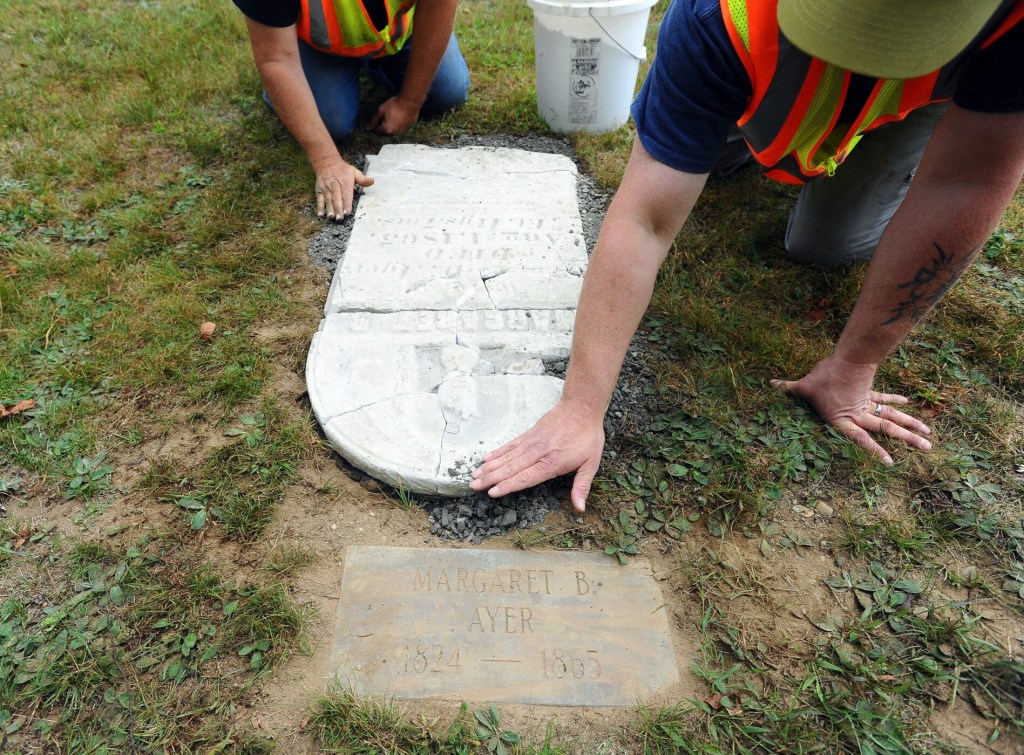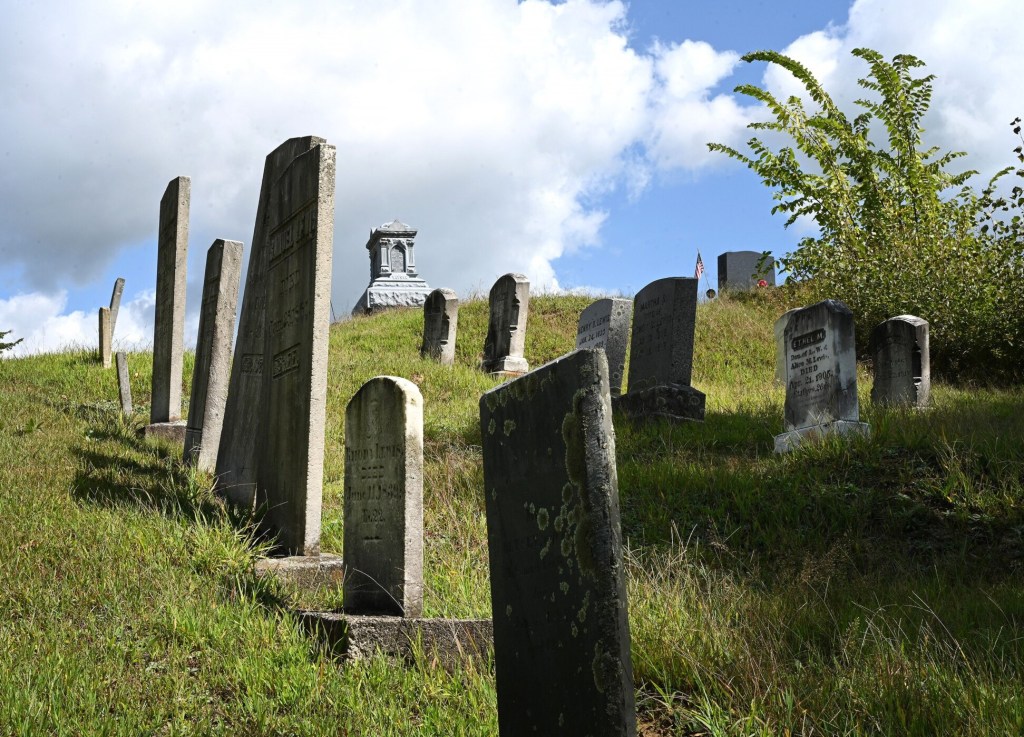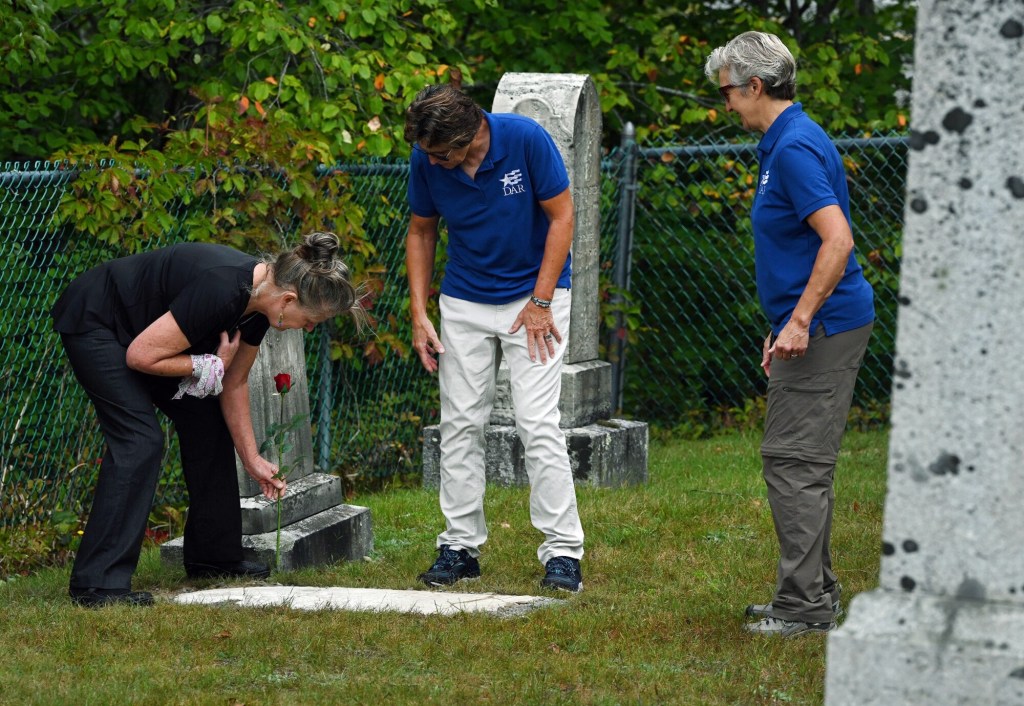FAIRFIELD — Cindy Gagnon wasn’t expecting to stumble across a local mystery this summer.
She had been planning to continue her work with Daughters of the American Revolution, a group that restores the graves of American Revolutionary War veterans, and had begun work at the Alice Cemetery on the grounds of Good Will-Hinckley in Fairfield. She was comparing the graves in the cemetery to records from the Maine Cemetery Association, and had one name for which she couldn’t find a grave.
Gagnon, 63, thought the grave might be missing its headstone, and on a hunch figured she would ask the L.C. Bates Museum in Fairfield “just for the fun of it” to see if it had the stone. She was told by staff they didn’t have the headstone she was looking for, but they did have a different one dating to the 1800s.
And so the mystery began.
No one knows exactly how the headstone ended up in the museum, said Deborah Staber, museum director and curator. The stone is large and was broken into more than 10 pieces and at some point someone cemented it back together on a piece of metal board. The decades have worn away the stone and pieces of it remain missing, but it’s somewhat legible, inscribed with the name of Margaret Ayer, who died Aug. 1, 1865, at the age of 41, the wife of George Ayer. “Then husband dry thy tears, my children weep no more,” an inscription read.

The China Village Cemetery in China, shown Thursday, is the resting place of Margaret Ayer who died in 1865. Ayer’s damaged headstone had been in storage for years at the L.C. Bates Museum in Fairfield. It’s a mystery as to how it got to the museum, but Cindy Gagnon led an effort to find Ayer’s burial site and return the headstone to its proper place. It was laid atop Ayer’s grave Tuesday. Rich Abrahamson/Morning Sentinel
Staber said the stone has never been part of a museum collection, but was probably brought there at some point for safekeeping. About 20 years ago the museum staff tried to determine where Ayer was buried, but were unsuccessful.
“So although we had tried, we never found where (Ayer) went,” Staber said. “We put her in a safe place and were waiting for someone like Cindy to come along and solve our problem and mystery.”
The Bates Museum is on the grounds of Good Will-Hinckley and the staff had looked to see how Ayer may have been connected to the campus, but could not find that either.
“We always wondered who Margaret was,” Staber said.

Josh Ross, right, and Shawn Reed with the China Public Works Department carry Margaret Ayer’s headstone to her gravesite Tuesday at China Village Cemetery in China. The headstone was discovered in storage, and in pieces, at the L.C. Bates Museum in Fairfield and it remains unclear when the stone was taken from Ayer’s gravesite and why it ended up at the museum. Rich Abrahamson/Morning Sentinel
Although it wasn’t the gravestone for Gagnon’s unmarked grave, she simply couldn’t let Ayer’s headstone go back into storage. She was determined to track down Ayer’s gravesite.
Gagnon, a Benton resident, had some practice from her work with Daughters of the American Revolution. She joined the group in the last few years, as membership to the group requires a family connection to someone who fought in the Revolutionary War. It took Gagnon a few years to find her connection.
The organization works to clean up gravesites and sometimes does restoration work, which is how Gagnon first got into headstone restoration.
“We fix cemeteries; we come in and clean — its all about patriotism, education and historical preservation,” Gagnon said.
She’s done some other work repairing headstones, like in cases where they are only in a few pieces and can be put back together. In other cases, she said, if the stone is too damaged to repair, the best practice is to find the base of the headstone and bury the rest of it there.
The group is focused on Revolutionary War veterans, but Gagnon said sometimes she can’t help but stray off track. When a veteran is buried next to his wife or child, whose graves are in poor condition, how is she supposed to leave them like that?

Such was the case with Ayer’s headstone. Gagnon just couldn’t let it sit in the museum. So she decided to track down Ayer.
More and more cemetery and genealogical information is available online. So Gagnon just had to go on findagrave.com, a website aimed at finding and sharing burial information. Gagnon said she searched under the Ayer name in Maine, and was able to find Margaret.
She was buried in China Village Cemetery with her parents and brother. Her husband George died in 1890, but he had married again and was buried with his second wife in Oakland.
“We’re really pleased that Cindy solved the problem and returned the piece to its rightful place,” Staber said. “That was the museum’s goal, to have it go back to the rightful place.”
Gagnon went to Ayer’s gravesite and found that in the decades since her death, someone had replaced her headstone with a plaque, to leave some marker identifying the grave.
Ayer’s burial site now has her headstone, too. Gagnon connected with China officials and Staber got in touch with the museum’s board of directors, allowing for the stone to be placed atop the grave Tuesday.
Julie Finley, a member of the China cemetery committee, said a shallow hole was dug for the headstone so that it lies flat with the ground and can still be read.
For Gagnon, her months of work and sleuthing has been rewarding.
“It was pretty exciting, actually, to find her, find out where she belongs,” she said.
Send questions/comments to the editors.


